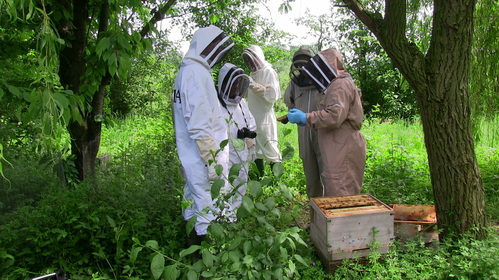
It seems that many people are aware of how important bees are for humans and how dramatically they are declining; but while most are keen for someone to help bees recover, they don’t want to be around bees (including my neighbours!). However, at the workshop I learnt that cities, so typically human spaces, have now become more hospitable for bees than the open countryside, because they provide a variety of vegetation from gardens which bees need but which the country has lots due to extensive farming. So, ironically, it seem that finding ways of bringing people to share the same spaces with and acquiring proper awareness of bees has become almost a necessity for the sake of humanity as well as the bees themselves. This seems to me an opportunity for participatory research to widen the focus from co-designing with bees individual hives (as we saw that some researchers have done) to co-designing with humans and bees new ways of constructing space-sharing and mutual awareness abilities and practices at a systemic level, to create new hybrid urban models. Pervasive and ubiquitous computing technology is rapidly transforming the model of the city into that of the ‘smart city’…perhaps in this transition, intertwined with the smart city of humans, we will also see the emergence of the ‘smart city of bees’.
 RSS Feed
RSS Feed
